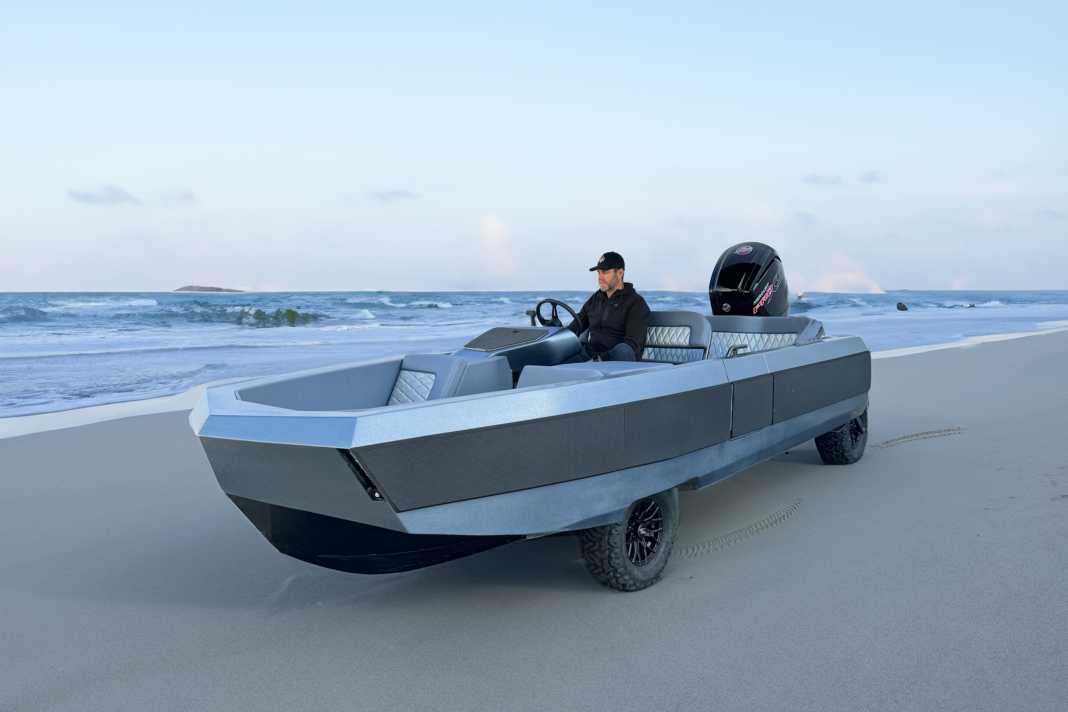





The floating electric car can be parked in a conventional garage and is always ready for a spontaneous trip to the sea or a lake. This combination of land and water vehicle eliminates the time-consuming transport of a boat to the water. Users can set off directly from home and drive the vehicle straight into the water at their destination.
- The first part of our "Amphibian series" was about a hermaphrodite between Motorbike and jet ski. Here we show the combination of electric car and boat, the WaterCar EV.
Possible applications
Made entirely from aluminium, the WaterCar EV can be used in a variety of ways. It is just as suitable for short fishing trips as it is for spontaneous trips on lakes or in the sea. Harbour cruises at sunset or island hopping are also possible with the amphibious vehicle. The manufacturer emphasises that the vehicle is designed to make boating uncomplicated, spontaneous and entertaining. The range and speed on the water are significantly higher than on land.
However, the manufacturer is still keeping a low profile on the subject of "road approval".
Electric drive
As an EV (Electric Vehicle), the WaterCar relies on a purely electric drive, at least on land. This has advantages in terms of environmental friendliness and reduced operating costs. The standard motor has an output of 5 kW. This allows the WaterCar to reach speeds of around 40 km/h on land. According to the manufacturer, the battery capacity of 150 Ah should be sufficient for around 30 kilometres of "shore leave".
Practical aspects
The ability to park the WaterCar EV in your own garage makes storage and maintenance much easier than with conventional boats. There are no costs for moorings or winter storage. The vehicle is also ready for use at any time without the need for time-consuming preparations.
About WaterCar
WaterCar has been producing amphibious vehicles for more than 30 years and is based in California. The company specialises in developing innovative solutions for the transition between land and water use. The company strives to dissolve the boundaries between conventional vehicles and boats and to create new possibilities for leisure activities on and around the water.
Technical data
As a boat
- Top speed: 30 kn
- Tank volume: 68 l
- Range: 160 km
- Length: 5.48 m
- Width: 2 m
- Weight: 1 t
- Outboard motor: Mercury 115 PRO XS 115 hp (alternatively Mercury Avator electric motor)
As a car
- Engine power: 5 kW
- Battery: 150 Ah
- Top speed: 40 km/h
- Range: 32 km
- More Info
